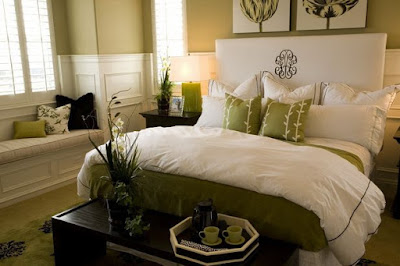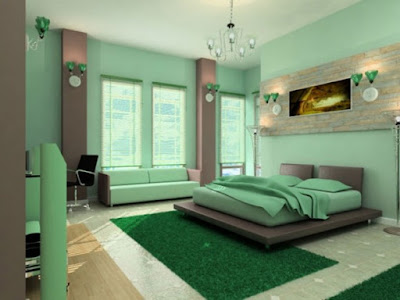Choose a Rug for Any Room
 Rugs are completely inappropriate in dance studios and cathedrals. In your house, though, they are almost a necessity, anchoring seating arrangements, absorbing sound, insulating cold floors and cushioning hard ones -- adding to the sense of comfort and the beauty that are both the form and function of a home. Give some thought to the particulars to ensure you invest in the right rug for each room. And don't forget the rug pad to protect the carpet, lengthen its life, give feet a soft landing and keep the rug from slipping.
Rugs are completely inappropriate in dance studios and cathedrals. In your house, though, they are almost a necessity, anchoring seating arrangements, absorbing sound, insulating cold floors and cushioning hard ones -- adding to the sense of comfort and the beauty that are both the form and function of a home. Give some thought to the particulars to ensure you invest in the right rug for each room. And don't forget the rug pad to protect the carpet, lengthen its life, give feet a soft landing and keep the rug from slipping.Visual Impact
Color and pattern are critical. Be careful choosing rug patterns for a bedroom or living room already busy with wallpaper and patterned upholstery or drapes. You can mix patterns, but be sure to mix the scale as well -- diminutive, intricate flowers on a carpet below bold, wide-striped curtains. Determine whether furniture will hide parts of a rug's design, and don't cover up any important images -- a repetitive pattern makes furniture placement easier. Solid color or overdyed carpets work well in rooms with busy decor. Balance wall color, upholstery and floor color to settle on a compatible single hue or dominant design color. Oriental rugs go with most decor schemes, and a quality hand-knotted rug represents a good long-term investment, but look for carpets made without child labor. Most certified child-labor-free rugs bear a label, such as RugMark or GoodWeave, on the underside.
Space Definition
Furniture before carpet is the rule. Choose the sofa, chairs, table, bed, dresser, wall system -- and then pick the perfect carpet. People usually keep furnishings from one house to the next, but may replace a carpet that no longer fits, is unsuitable for the climate or is worn. The rug will define the space. Use one or more rugs to clarify different functions in an open-plan room; anchor the seating area with one carpet, the dining room with another. A larger rug makes the room seem larger, so be generous with carpet under the conversation area, the home office desk or the free floor space in the kids' shared bedroom. Accent a special feature with its own carpet. Your concert grand is less likely to antagonize the downstairs neighbors when you stage it on a thick carpet and pad.
Size Matters
Itty-bitty rugs belong on the wall. A rug that sits under just the coffee table anchors nothing and looks like a beach towel. It also chops up the flow of the room. In the living room, place all the front legs of furniture in the conversation area on the carpet. Even better, choose a carpet that provides a generous border around the seating. A bedroom rug should sit under at least the lower two-thirds of the bed and leave 3 feet on either side to safeguard your cold toes in the morning. You get to decide whether the rug is large enough to fit under the nightstands too -- not important. In the dining room, the rug should be big enough so there are 6 inches beyond chairs when they are pushed back from the table. A rule of thumb is to measure the length and width of the dining table and add 4 to 6 feet to each.
The Geometry of Rugs
The perfect rug for your room might be a square or a circle. This is a bit more challenging than finding a more typical rectangular rug -- as rugs are woven on looms, rectangles are the default shape. But don't settle for an awkward geometric juxtaposition. Custom and off-size carpets are options when an unusual space needs a floor covering. Snap-together carpet tiles might work well in a dining room or a casual living room -- and those are simple to break down and move to a new location and new configuration. A round carpet in an entry hall displays an encircling warmth and welcome. A skinny sliver of a rug suits a narrow hallway. A square carpet in your square living room has an energetic symmetry. Trimming an old carpet and adding a border will adapt it to the shape and size you need.











Comments
Post a Comment